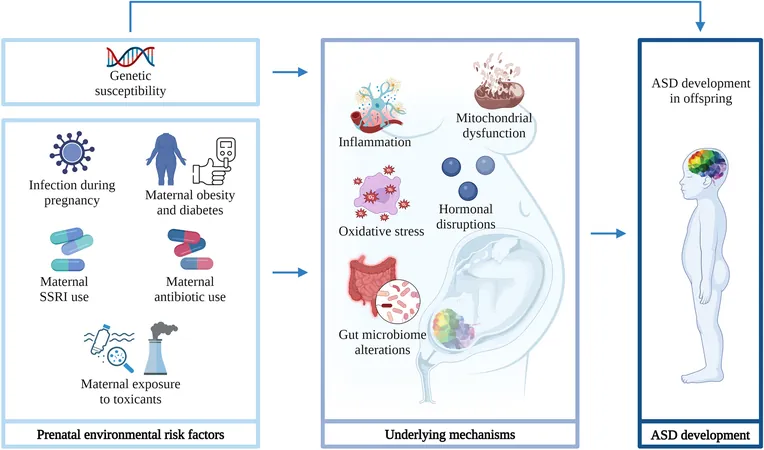
AFib: Understanding Symptoms, Causes, and Life-Saving Treatments
2024-09-25
Atrial fibrillation (AFib) is a serious and increasingly prevalent heart condition characterized by an irregular heartbeat. Often leading to severe complications, AFib currently affects about 40 million people worldwide, including 6 million in the United States. With projections from the Centers for Disease Control and Prevention suggesting that numbers will soar to 12.1 million by 2035, awareness and management of this condition are more crucial than ever.
Dr. William Maddox, a cardiac electrophysiologist at the University of Alabama at Birmingham Cardiovascular Institute, highlights the severe risks associated with AFib. “AFib significantly increases stroke risk, accounting for approximately one in five strokes in the US,” he explains. Beyond the stroke risk, patients may experience troubling symptoms such as palpitations, dizziness, chest pain, shortness of breath, and even fainting. The condition can exacerbate other cardiac issues, leading to increased hospitalizations and a heightened risk of mortality.
Recognizing Symptoms
AFib arises from electrical disturbances in the heart, often originating in the pulmonary veins of the left atrium. Symptoms can vary in intensity but commonly include: - An irregular heartbeat or palpitations - A feeling of heart fluttering or pounding - Lightheadedness or extreme fatigue - Shortness of breath - Chest pain
Understanding Risk Factors
The likelihood of developing AFib increases with age; however, several lifestyle and health-related factors can contribute to the development of this condition. These include: - High blood pressure - Obesity and obstructive sleep apnea - Pre-existing heart disease and heart failure - Diabetes and hyperthyroidism - Chronic kidney disease - Lifestyle choices such as heavy alcohol consumption and smoking - Structural changes in the heart, such as enlargement of the left-side chambers
Prevention Strategies
Dr. Maddox stresses the importance of a healthy lifestyle in preventing AFib. Key prevention strategies include: - Adopting a balanced diet and engaging in regular physical activity - Controlling high blood pressure - Avoiding smoking and moderating alcohol intake - Treating underlying conditions such as sleep apnea While triggers for AFib episodes can vary from person to person, stress, dehydration, and alcohol consumption are common culprits. Keeping a journal of symptoms can help individuals identify potential triggers and minimize the chance of episodes.
Effective Management and Treatments for AFib
Treatment for AFib has two primary objectives: preventing stroke and managing symptoms. Patients may be prescribed anticoagulants—medications that reduce the risk of blood clots. In addition to these, other medications may help in reducing the frequency of AFib episodes and alleviating symptoms. For patients who cannot tolerate medications, catheter ablation—a minimally invasive procedure that targets AFib triggers within the heart—may be an option. Dr. Maddox notes that the UAB Cardiovascular Institute adopts a comprehensive approach, offering advanced treatments such as closure of the left atrial appendage to lower stroke risk without requiring ongoing anticoagulation. Approximately 800 to 900 AFib ablations are performed yearly at the institute, reflecting their commitment to effectively managing this heart condition.
The Takeaway
With its significant health implications and increasing prevalence, understanding AFib is crucial for those at risk. By recognizing the symptoms, acknowledging the risk factors, and committing to prevention and treatment strategies, individuals can take proactive steps towards better heart health. Don't let AFib control your life—knowledge and action are your best defenses!



 Brasil (PT)
Brasil (PT)
 Canada (EN)
Canada (EN)
 Chile (ES)
Chile (ES)
 España (ES)
España (ES)
 France (FR)
France (FR)
 Hong Kong (EN)
Hong Kong (EN)
 Italia (IT)
Italia (IT)
 日本 (JA)
日本 (JA)
 Magyarország (HU)
Magyarország (HU)
 Norge (NO)
Norge (NO)
 Polska (PL)
Polska (PL)
 Schweiz (DE)
Schweiz (DE)
 Singapore (EN)
Singapore (EN)
 Sverige (SV)
Sverige (SV)
 Suomi (FI)
Suomi (FI)
 Türkiye (TR)
Türkiye (TR)